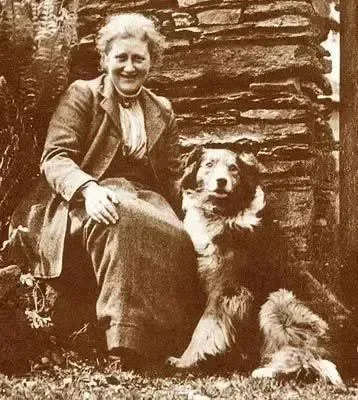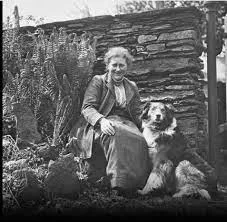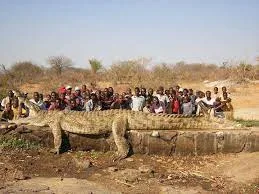Beatrix Potter: The Mycologist Behind Peter Rabbit – From Rejected Science to Immortal Legacy
Before Peter Rabbit hopped into the world’s hearts, Beatrix Potter was a pioneering scientist documenting fungi with microscopic precision. In the 1890s English countryside, while Victorian women embroidered and hosted tea parties, Potter lay on the forest floor with a magnifying glass, studying mushrooms. Her 1897 paper on spore germination and lichen symbiosis was rejected by the Linnean Society—not for lack of merit, but because she was a woman. Undeterred, she pivoted to children’s literature, self-publishing The Tale of Peter Rabbit in 1901. The book’s success made her immortal, but her scientific contributions—posthumously recognized—reveal a brilliant mind silenced by sexism. As of November 16, 2025, Potter’s dual legacy as mycologist, illustrator, author, and conservationist endures, with her books selling over 250 million copies and her Lake District lands preserved forever.

Early Life: A Naturalist in a Gilded Cage
Born July 28, 1866, in London to wealthy parents Rupert and Helen Potter, Beatrix grew up in a Kensington mansion with governesses and rare outings. Her parents expected marriage and domesticity, but Beatrix rebelled through nature. She kept a menagerie: rabbits (Peter, Benjamin), mice, a bat, frogs, and hedgehog Mrs. Tiggy-Winkle. She sketched them with anatomical accuracy—every whisker, paw, and muscle rendered in watercolor.
Summers at Dalguise House in Scotland’s Perthshire ignited her passion. She collected fossils, insects, and plants, dissecting and drawing with obsessive detail. By her teens, she filled journals with observations, quoting Darwin and Linnaeus. Her brother Bertram, sent to boarding school, left her self-taught—later saying:
“Thank goodness I was never sent to school; it would have rubbed off some of the originality.”
Mycology Obsession: Fungi as Frontier
In her twenties, Potter turned to mycology—the study of fungi. Mushrooms fascinated her: their overnight emergence, impossible colors, and elusive classification. At the family’s Lake District estate, she collected specimens from forests, bogs, and moors.

Using a compound microscope, she:
- Dissected fruiting bodies.
- Observed spore germination under controlled conditions.
- Cultivated fungi on glass slides.
Her breakthrough: theorizing lichens (crusty growths on rocks/trees) as symbiotic organisms—fungi partnered with algae. This challenged the era’s view of lichens as single entities.
The 1897 Rejection: Science’s Sexist Gate
In 1897, Potter submitted “On the Germination of the Spores of Agaricineae” to the Linnean Society of London—a prestigious body founded in 1788. Her paper included:
- Microscopic illustrations of spore structures.
- Experiments on germination rates.
- Lichen symbiosis hypothesis.
Women couldn’t attend meetings or present papers. Her uncle, chemist Sir Henry Roscoe, submitted it on her behalf. It was read by mycologist George Massee but dismissed without debate. The minutes noted: “not of sufficient importance.”
Potter was devastated. She withdrew the paper, never resubmitting. Massee later used her illustrations without credit.
Pivot to Peter Rabbit: Science in Story
Potter had written illustrated letters to children for years. In 1893, one to Noel Moore featured a rabbit named Peter. Rejected by publishers as “too unconventional,” she self-published 500 copies of The Tale of Peter Rabbit in 1901. Frederick Warne & Co. took it in 1902; it sold 50,000 copies in a year.

She wrote 23 tales (1902–1930):
- The Tale of Squirrel Nutkin (1903)
- The Tale of Benjamin Bunny (1904)
- The Tale of Mrs. Tiggy-Winkle (1905)
- The Tale of Jemima Puddle-Duck (1908)
Each blended scientific accuracy with whimsy:
- Animals drawn from life studies.
- Plants identifiable species (e.g., Digitalis purpurea in Peter Rabbit).
- Habitats based on Lake District observations.
Conservation and Later Life
Book wealth bought Hill Top Farm (1905) in the Lake District. She raised Herdwick sheep, managed forests, and fought development. By death, she owned 15 farms, 4,000 acres—left to the National Trust in 1943.
She married William Heelis in 1913 at 47, continuing farming and writing. Her final book, The Tale of Little Pig Robinson, appeared in 1930.
Posthumous Recognition
- 1997: Linnean Society issued formal apology for 1897 rejection.
- 2016: Her lichen theory confirmed decades ahead of peers.
- Museums: Armitt (Ambleside), V&A, Natural History Museum hold her 1,000+ fungal illustrations.
Timeline
| Year | Milestone |
| 1866 | Born in London |
| 1897 | Paper rejected by Linnean Society |
| 1901 | Self-publishes Peter Rabbit |
| 1905 | Buys Hill Top Farm |
| 1913 | Marries William Heelis |
| 1943 | Dies; leaves land to National Trust |
| 1997 | Linnean apology |
Legacy in 2025
- 250M+ books sold in 35+ languages.
- UNESCO Lake District partly her preservation.
- Mycology influence: Modern studies cite her spore work.





